Hands On With the Nexus 5X and 6P
by Brandon Chester on September 29, 2015 4:05 PM EST- Posted in
- Smartphones
- Mobile
- Nexus
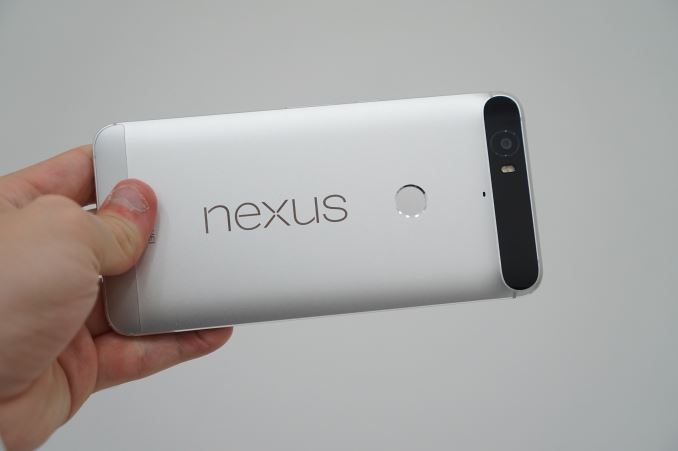
Today Google announced several new devices at their September 2015 launch event in San Francisco. By far the most anticipated devices were the two new Nexus phones that were announced. The first is the Nexus 5X made by LG, a successor to the Nexus 5 which was released nearly two years ago in late 2013. The second is the Nexus 6P, which is made by Huawei and replaces the existing Nexus 6 made by Motorola. Both of these phones bring significant improvements over their predecessors, particularly the Nexus 5X which can take advantage of all the advancements made in the past two years. Below you can see the specifications for each of these new devices along with the specs of their predecessors to see how they compare.
| Google Nexus Smartphones | ||||
| LG Nexus 5 | LG Nexus 5X | Motorola Nexus 6 | Huawei Nexus 6P | |
| SoC | Snapdragon 800 | Snapdragon 808 | Snapdragon 805 | Snapdragon 810 |
| GPU | Adreno 330 | Adreno 418 | Adreno 420 | Adreno 430 |
| RAM | 2GB LPDDR3 | 3GB LPDDR3 | 3GB LPDDR4 | |
| Display | 5.0-inch 1920 x1080 IPS LCD | 5.2-inch 1920 x 1080 IPS LCD | 5.96-inch 2560 x 1440 AMOLED | 5.7-inch 2560 x 1440 AMOLED |
| Wireless | 1x1 802.11a/b/g/n/ac BT 4.2, NFC | 2x2 802.11a/b/g/n/ac BT 4.2, NFC | ||
| Storage | 16/32GB | 32/64GB | 32/64/128GB | |
| I/O | microUSB, 3.5mm audio | USB Type-C, 3.5mm audio | microUSB, 3.5mm audio | USB Type-C, 3.5mm audio |
| Size / Mass | 137.84 x 69.17 x 8.59mm, 130g | 147.0 x 72.6 x 7.9 mm, 136 grams | 159.26 x 82.98 x 10.06mm, 184g | 159.3 x 77.8 x 7.3mm, 178 grams |
| Battery | 2300 mAh (8.74Wh) | 2700mAh (10.26Wh) | 3220 mAh (12.236Wh) | 3450mAh (13.11Wh) |
| Camera | Rear Facing 8MP, 1/3.2", (Sony IMX179), F/2.4 Front Facing 1.3MP |
Rear Facing 12.3MP with 1.55µm pixels, F/2.0 Front Facing 5MP, F/2.0, 1.4µm |
Rear Facing 13MP, 1/3.06" (Sony IMX214), F/2.0. Front Facing 2.1MP |
Rear Facing 12.3MP with 1.55µm pixels, F/2.0 Front Facing 8MP, F/2.0, 1.4µm |
| SIM | MicroSIM | NanoSIM | ||
| Launch Price | $349 (16GB) | $379 (16GB) | $649 (32GB) | $499 (32GB) |
The Nexus 5X is similar to the Nexus 5 in some ways but different in others. The chassis is noticably thinner, although the camera protrudes a fairly significant amount. The device has gotten larger in the other dimensions as a result of its larger display. However, it's not that much larger, and during my time with it I never felt that it was difficult to hold. The SoC moves from Qualcomm's Snapdragon 800 to Snapdragon 808, with the amount of RAM and internal NAND remaining the same. The battery capacity receives a significant bump, going from 8.74Wh to 10.26Wh. As for the camera, it's greatly improved. The Nexus 5 was never known for having an amazing camera, and with these new Nexus phones Google appears to have implemented a custom camera sensor. It's a 12.3MP sensor with 1.55 micron pixels, which roughly equates to a 1/2.3" sensor format.
The back of the Nexus 5X feels similar to the material used in the black Nexus 5. There's also a blue model and a white model, and while I didn't get to try the white model the blue version seemed to have the same texture as the black one. The design of the phone diverges significantly from the appearance of the Nexus 5. There's no more raised black ring around the camera, which makes the current Nexus 9 a bit of a loner as it's the only device left that has that design accent. The camera has also been moved to the center of the back, while on the Nexus 5 it was situated in the upper corner. Something worth noting is that the Nexus 5X and 6P both lack OIS, something that existed on their predecessors. Google's rationale is that you won't need long exposures as the camera sensor and pixel size is large enough to work well without it. Whether or not that is true remains to be seen, but OIS is still a useful feature and I think many users who are hoping to upgrade from an existing Nexus smartphone will be sad to see it gone.
On the software side, Android Marshmallow has a significantly improved camera app. Google has addressed many of the issues with menus and settings being difficult to find, and I also noticed that the camera preview frame rate on the Nexus 5X and 6P was much higher than on the Nexus 5 and 6.
Below the camera is Google's new fingerprint sensor. According to Google it can recognize a finger in under 600ms and has a very low error rate. It's difficult to say how it compares to other devices, and I wasn't able to get time to use it, so that will have to wait for when we actually review the Nexus 5X. The position on the back seems to be well chosen, and because it also will wake up the phone it doesn't suffer from the issue with some early rear-mounted fingerprint scanners which is that you had to wake the device first.
As for the front of the phone, there's not a whole lot to say. It's dominated by the display, with the earpiece on the top and a single speaker on the bottom and a front-facing camera to the left of the top speaker. The display itself seemed very good, and the color rendition looked similar to the Nexus 5 which is a good sign. While the Nexus 6P has an AMOLED display, the Nexus 5X is an IPS LCD.
Next is the Huawei-made Nexus 6P. Every aspect of the device feels like a large improvement over the Nexus 6. The first thing that stood out to me is the size. The Nexus 6 was extremely large and I couldn't hold it properly in really any circumstance. The Nexus 6P takes a step back to a 5.7" display, and the dimensions of the phone itself are not much larger than the iPhone 6s Plus despite the larger screen. Of course, you end up losing some real estate to the on screen buttons while the iPhone has a physical home button, but the point is that the phone is much easier to hold and use than the Nexus 6 was. The thickness also contributes to this as well, as the Nexus 6P is almost 3mm thinner than the Nexus 6.
Beyond the dimensions, the construction and feel of the phone is miles ahead of the Nexus 6. It's an aluminum unibody construction with a diamond cut edge edge, and the primarily plastic construction of the Nexus 6 isn't even remotely comparable. It's also fairly light considering the aluminum build and its size.
Something worth noting is that Google seems to have given Huawei and LG a lot of freedom when designing these new phones. The Nexus 5X doesn't share many visual characteristics with the 6P apart from the Nexus logo on the back and the fingerprint scanner. Rather than mounting the camera in the middle, Huawei has put it in the upper left corner like the old Nexus 5 did. The entire top of the back also has a slightly raised black bar. I'm honestly not a fan of this, as it just interrupts what should be a continuous aluminum surface.
Like the Nexus 5X, there's not a whole lot to say about the front of the Nexus 6P. It has stereo speakers, a front-facing camera, and a large display. The 6P bumps the front camera resolution up to 8MP from the 5X's 5MP, with a corresponding increase in sensor size to maintain the 1.4 micron pixel size.
The display is the part of the Nexus 6P that I was most curious about. The Nexus 5 was notable for having a very accurate display despite its low price, and with the Nexus 7 also having accurate calibration it was hoped that Google would continue this across all of their products. Unfortunately, the Nexus 6 shipped with a very poorly calibrated AMOLED display with low brightness. When I first used the Nexus 6P I was very upset to see that it was clearly oversaturated like the Nexus 6, but there's more to the story this time around. In the Nexus 6P's developer settings there is a switch to enable an sRGB mode, and when this switch is turned on the Nexus 6P's display appears to have similar color rendition to the Nexus 5X which is a very good sign. While we'll need to get a review unit in order to analyze all of the display's attributes, I am hopeful that Google has recognized and fixed the issues with the Nexus 6's display in the Nexus 6P.
On the top of the Nexus 6P you'll find a 3.5mm audio jack, whereas you'll have to move to the bottom to find it on the Nexus 5X. However what you won't find on the bottom of either Nexus phone is a USB Micro-B port; Google has decided to be forward looking, and like the Chromebook Pixel the new Nexus smartphones use the USB Type-C connector for data and charging. While this will come with some pain in the short run as users won't be able to use existing USB Micro-B cords, I think the benefits are worth it.
Both new Nexus devices also come with the new Android Sensor Hub. This essentially refers to the different sensors that the devices include, and how they are now controlled and managed by a dedicated processor rather than the device's application processor. This is important for features like Doze in Android Marshmallow, as it allows Google to use minimal power to check the status of sensors and determine whether or not to go into deep sleep.
For me personally, the Nexus 5X is the most interesting of Google's two new Nexus phones. I always like to see what vendors can do when they're targeting a price far less than that of a flagship smartphone. The Nexus 6P definitely has its appeal too though, and we'll be running both of them through our standard suite of tests in order to see how they compare to the competition. If you're already convinced that you want the Nexus 5X or 6P you can pre-order them online now from the Google Store so long as you live in the US, UK, Canada, Japan, or Ireland. The Nexus 5X starts at $379 and comes in black, white, and blue, while the Nexus 6P starts at $499 and comes in standard aluminum, white, and black.


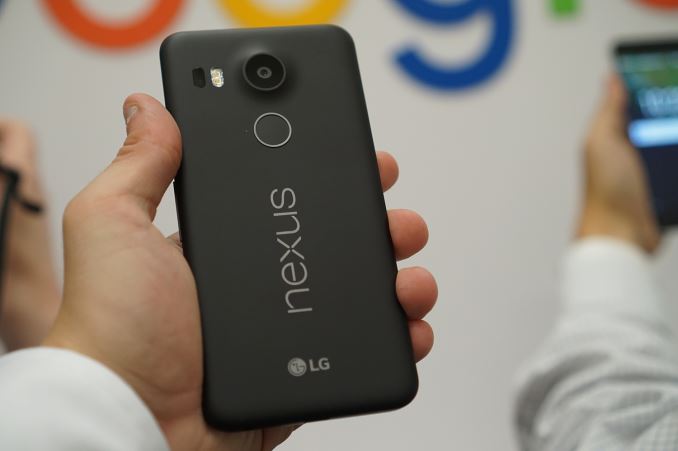
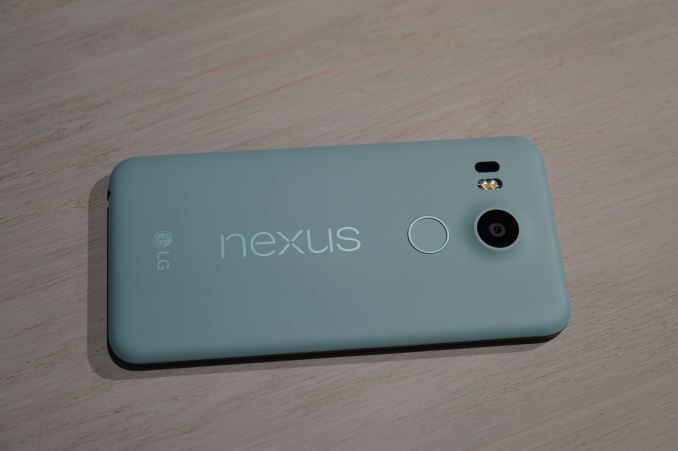

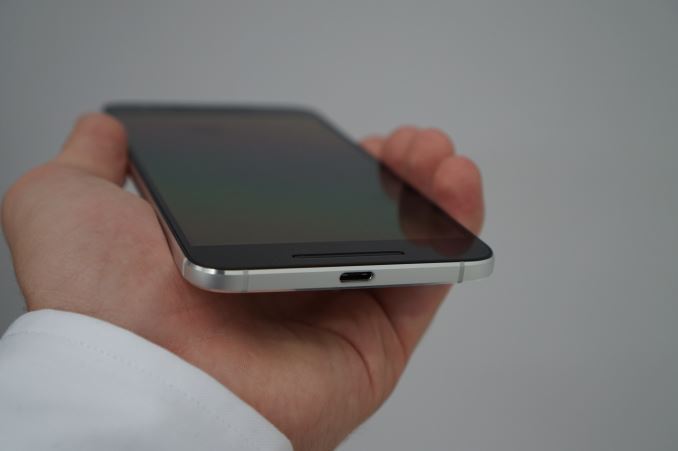
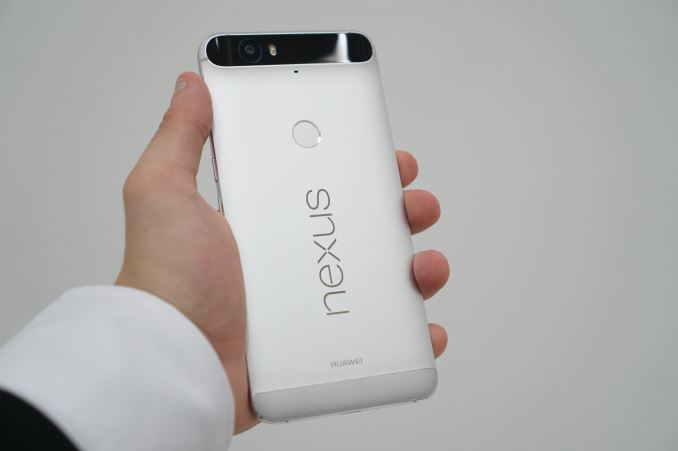
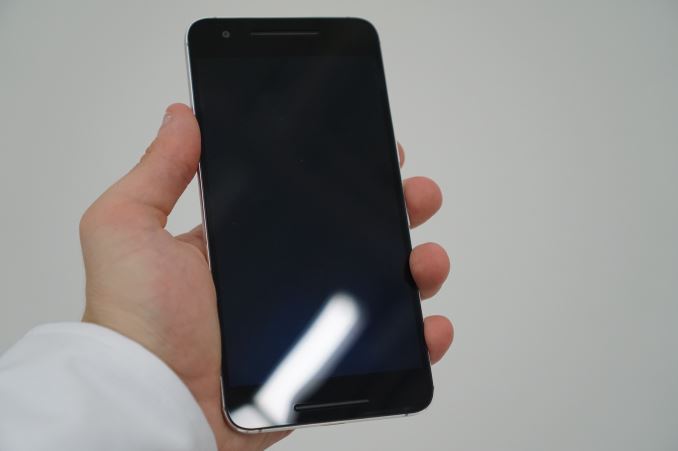
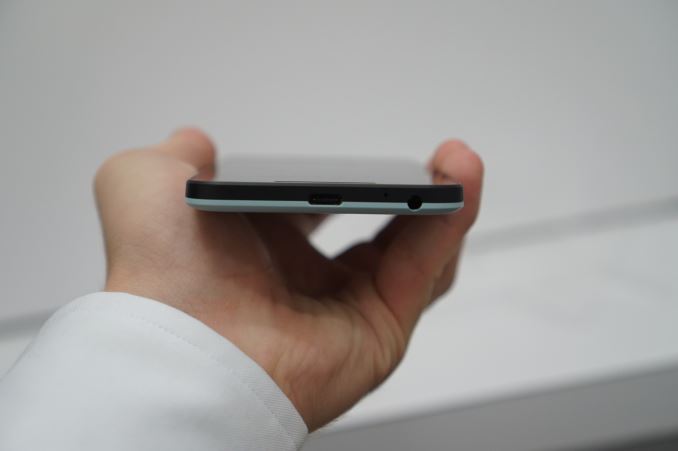








116 Comments
View All Comments
gg555 - Wednesday, September 30, 2015 - link
And by the way, the Nexus One had a unibody aluminum design. All these articles keep reporting that the 6P is the first Nexus phone with a unibody aluminum design. It's just not true. It's astonishing how Google says something or puts it in the PR press packet and all the reporters just mindlessly repeat it.As far as I know, the Nexus One may have been the first phone ever with a unibody aluminum design. It shows how far Google has slid from it's auspicious first Nexus phone. And it's sad how little credit HTC gets for pioneering this design (most people probably now think Apple did it first, even though the iPhone 6 is an obvious copy in many ways of the original HTC One--and perhaps HTC called it "One" to recall the first Nexus device?).
So it's taken Google six subsequent generations of phones to make a phone that has as premium a feel as the first Nexus phone. Is that really progress?
Laxaa - Wednesday, September 30, 2015 - link
9I really wanted the Nexus One back in the day.HTC makes really good hardware, but their priorities seem to be lacking these days. Instead of concentrating on a simple and elegang lineup(like Motoroal) whey seem to saturate the market with a million different variations of the same model(see the recently launched M9+ Supreme Camera)
Ziich - Thursday, October 1, 2015 - link
That is mostly true but the nexus one had a removable plastic back covers to access the battery and internal. so technically the 6p could touted as the first all aluminium unibody nexusgg555 - Wednesday, October 7, 2015 - link
The 6P actually hast cut outs exactl like the Nexus One, on the back, but smaller and not removable. There's a cut out obviously for the camera hump, which is glass apparently. And there's a similar sized cut out at the bottom covered with plastic the same color as the body. Other than the camera, both are mainly there for the antennas in the phone, which can't transmit well through aluminum.The Nexus One was designed the same way, with two cut outs, top and bottom, which allowed for antenna transmission. In addition the top cut out was larger to get the battery out (as you said) and to access the sim card and sd card.
But other than that size difference on the top cut out, it is in fact exactly the same type of design.
markbanang - Wednesday, September 30, 2015 - link
What a huge disappointment, I was hoping that the 5X would be my next phone, but with the announcement I know I will need to look elsewhere.Being Nexus devices they were never going to have SD card slots, but I was hoping for a decent amount of flash. 32GB max. on the 5X is unbelievable in this day and age. Mobile data coverage simply isn't good enough to be able to rely on always having access to the cloud. Not only that but the cost of upgrading the storage is offensive. £40 for 16GB on the 5X, and £50/£130 for 32/96GB on the 6P is crazy when 128GB of high performance flash costs at most £60 at retail.
I'm seriously considering trying to order an Android One device from Turkey or the Philippines so that I can get a Nexus experience (stock and regularly updated) and enough storage at a reasonable price.
Wh0else - Wednesday, September 30, 2015 - link
Check out the Ireland store to see what we're being charged. A 32gb 5x with a folio case and USB a to USB c cable is nearly 600 euro, and we don't get the play store voucher. So we're paying so much more than the USA for a midrange phone? I think I'll stay on my nexus 5 thank youZoomer - Wednesday, September 30, 2015 - link
I'm still waiting on a replacement for my M7. Nothing is that compelling. IMO Sense seems to be the least bad of the skins.gg555 - Thursday, October 1, 2015 - link
The M7 is a beautiful phone. It's going to be hard to replace. It's the phone Apple copied for the original iPhone 6. I wish HTC had kept that design for the M8 and M9, which I don't like nearly as much. The differences are relatively small, but it's funny how they make the M8 and M9 just not as striking.If I didn't want wifi calling on T-Mobile, I'd be tempted by the Moto X Style/Pure Edition. I like Motorola's designs. And they have good noise cancellation, which is important to me--probably the best out there now, since I can't tell if anyone is using the Audience chip anymore. You also get the close to pure Android, so no skin to mess with. These days Motorola is definitely my second choice after Nexus phones.
Anyway, I'm still holding onto my Nexus 4, because each subsequent Nexus device has been lacking in one way or another. I would have gotten the Nexus 6 if it had not been so absurdly huge (if they had only made a 5.2 inch version, like the 2nd Gen Moto X). But if the three microphone noise cancellation on the 6P is better than the usual Fluence mediocrity, I may get it. I could use a CPU upgrade (even if it's the 810), even without OIS the camera has got to be better than the Nexus 4, the stereo speakers will be nice (I use my phone a lot to listen to the radio and podcasts), and the design seems nice, except of course for the fugly camera hump (I don't mind humps, but that black band just spoils an otherwise nice looking phone, it makes what's apparently not a very big bump appear enormous--I kind of want the aluminum, but the black band seems to blend in more on the black version).
Anyway, I'm still going to wait for the phone to be reviewed. Maybe by that point my initial interest will have faded and I'll be ready to hold out for a phone with Snapdragon 820. That seems like probably the smarter move, since it's just around the corner.
Laxaa - Thursday, October 1, 2015 - link
The M7 is beautiful indeed. I wish they wold go back to that style and at the same time remove that stupid logo from the front. I can live with the black bar, but that logo has to go.sahaskatta - Wednesday, September 30, 2015 - link
Nexus 6 didn't have Bluetooth 4.2. It had Bluetooth 4.1.